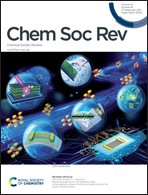Stereoelectronic power of oxygen in control of chemical reactivity: the anomeric effect is not alone
Abstract
Although carbon is the central element of organic chemistry, oxygen is the central element of stereoelectronic control in organic chemistry. Generally, a molecule with a C–O bond has both a strong donor (a lone pair) and a strong acceptor (e.g., a σ*C–O orbital), a combination that provides opportunities to influence chemical transformations at both ends of the electron demand spectrum. Oxygen is a stereoelectronic chameleon that adapts to the varying situations in radical, cationic, anionic, and metal-mediated transformations. Arguably, the most historically important stereoelectronic effect is the anomeric effect (AE), i.e., the axial preference of acceptor groups at the anomeric position of sugars. Although AE is generally attributed to hyperconjugative interactions of σ-acceptors with a lone pair at oxygen (negative hyperconjugation), recent literature reports suggested alternative explanations. In this context, it is timely to evaluate the fundamental connections between the AE and a broad variety of O-functional groups. Such connections illustrate the general role of hyperconjugation with oxygen lone pairs in reactivity. Lessons from the AE can be used as the conceptual framework for organizing disjointed observations into a logical body of knowledge. In contrast, neglect of hyperconjugation can be deeply misleading as it removes the stereoelectronic cornerstone on which, as we show in this review, the chemistry of organic oxygen functionalities is largely based. As negative hyperconjugation releases the “underutilized” stereoelectronic power of unshared electrons (the lone pairs) for the stabilization of a developing positive charge, the role of orbital interactions increases when the electronic demand is high and molecules distort from their equilibrium geometries. From this perspective, hyperconjugative anomeric interactions play a unique role in guiding reaction design. In this manuscript, we discuss the reactivity of organic O-functionalities, outline variations in the possible hyperconjugative patterns, and showcase the vast implications of AE for the structure and reactivity. On our journey through a variety of O-containing organic functional groups, from textbook to exotic, we will illustrate how this knowledge can predict chemical reactivity and unlock new useful synthetic transformations.



 Please wait while we load your content...
Please wait while we load your content...